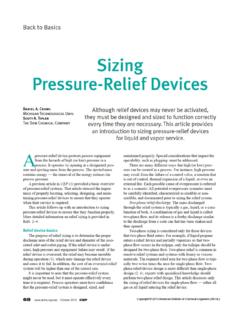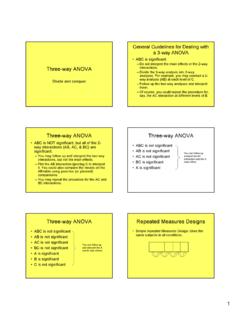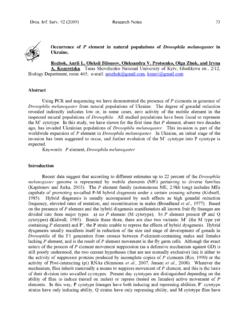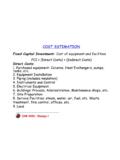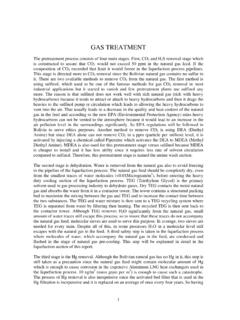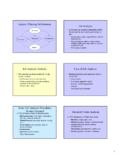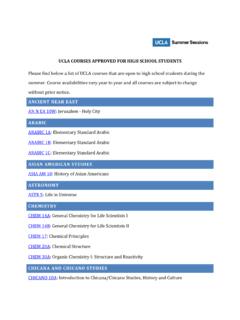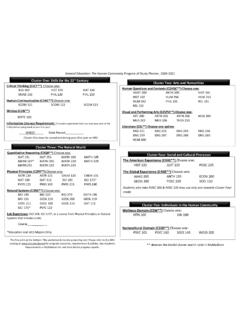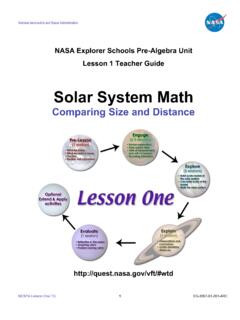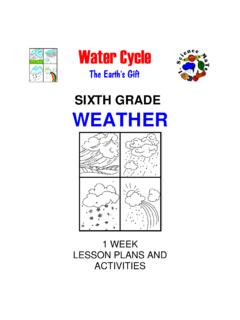Transcription of 5 Grade Curriculum Space Systems: Stars and the S ar System
1 5th Grade Curriculum Space Systems: Stars and the solar System An electronic copy of this lesson in color that can be edited is available at the website below, if you click on Soonertarium Curriculum Materials and login in as a guest. The password is soonertarium . PART 2 BRIGHTNESS OF THE Stars . -PRELIMINARY math BACKGROUND: Students may need to review place values since this lesson uses numbers in the hundred thousands. There are two website links to online education games to review place values in the section. -ACTIVITY - HOW MUCH BIGGER IS ONE NUMBER THAN ANOTHER NUMBER?
2 This activity involves having students listen to the sound that different powers of 10 of BBs makes in a pan, and dividing large groups into smaller groups so that students get a sense for what it means to say that 1,000 is 10 times bigger than 100. Astronomy deals with many big numbers, and so it is important for students to have a sense of what these numbers mean so that they can compare large distances and big luminosities. -ACTIVITY WHICH Stars ARE THE BRIGHTEST IN THE SKY? This activity involves introducing the concepts of luminosity and apparent magnitude of Stars .
3 The constellation Canis Major was chosen as an example because Sirius has a much smaller luminosity but a much bigger apparent magnitude than the other Stars in the constellation, which leads to the question what else effects the brightness of a star in the sky. -ACTIVITY HOW DOES LOCATION AFFECT THE BRIGHTNESS OF Stars ? This activity involves having the students test how distance effects apparent magnitude by having them shine flashlights at styrene balls at different distances. After seeing that the values of the distance of the different Stars could explain the discrepancies in luminosity and apparent magnitude in Canis Major's Stars the students are asked to make predictions about which Stars in Orion are the closest given the luminosity and apparent magnitude of the Stars in Orion.
4 -ACTIVITY HOW CLOSE ARE WE TO THE Stars AND THE PLANETS? This activity involves having the students predict what to place the planets relative to the sun in a scale model. The students then plot out the correct locations and compare them to their original predictions. The students are then asked to think about where the next closest star after the sun would be on the model to see the huge gap after the solar System . The McDonald Observatory in Texas has developed classroom activities & resources available at ( ), and this activity was taken from -ACTIVITY WHY DO WE NOT SEE ALL OF THE Stars DURING THE DAYTIME?
5 In this activity students investigate how having more light around makes it harder to pick out dim sources of light. The sun, the moon, and even lights around town reduce the apparent magnitude of the Stars . NGSS Standards for 5th Grade Curriculum Students who demonstrate understanding can: 5-ESS1-1. Support an argument that differences in the apparent brightness of the sun compared to other Stars is due to their relative distances from the Earth. [Assessment Boundary: Assessment is limited to relative distances, not sizes, of Stars . Assessment does not include other factors that affect apparent brightness (such as stellar masses, age, stage).]
6 ]. Disciplinary Core Ideas : The Universe and its Stars The sun is a star that appears larger and brighter than other Stars because it is closer. Stars range greatly in their distance from Earth. (5-ESS1-1). Science and Engineering Practices Analyzing and Interpreting Data Analyzing data in 3 5 builds on K 2 experiences and progresses to introducing quantitative approaches to collecting data and conducting multiple trials of qualitative observations. When possible and feasible, digital tools should be used. Represent data in graphical displays (bar graphs, pictographs and/or pie charts) to reveal patterns that indicate relationships.
7 (5-ESS1-2). Engaging in Argument from Evidence Engaging in argument from evidence in 3 5 builds on K 2 experiences and progresses to critiquing the scientific explanations or solutions proposed by peers by citing relevant evidence about the natural and designed world(s). Support an argument with evidence, data, or a model. (5-PS2-1),(5-ESS1-1). Crosscutting Concepts Patterns Similarities and differences in patterns can be used to sort, classify, communicate and analyze simple rates of change for natural phenomena. (5-ESS1-2). Cause and Effect Cause and effect relationships are routinely identified and used to explain change.
8 (5-PS2-1). Scale, Proportion, and Quantity Natural objects exist from the very small to the immensely large. (5-ESS1-1). PRELIMINARY math BACKGROUND: The lesson is intended to give students more intuition about what the size of different numbers practically represents. For example, comparing 10 to 1,000 or 10 to 100,000. This will be done by connecting the numbers to scale models that help students visualize how much bigger one number is than another number. The place value of numbers should be reviewed with students so that they will be able to make comparisons between the sizes of different large numbers without actually doing the long division to divide the numbers out.
9 You can use a calculator after the students have compared the numbers to check the comparison and get a more exact value. Below are two online math games that help students review place values. These could be done with the class if you have a smartboard, projector for your computer, or access to a computer lab. This website has the students click to throw a football to a receiver. If they throw it at the right time, the receiver catches it, and the student gets the opportunity to answer a place value question to earn points. It is a little hard to get it to the receiver, but the questions do go up to the billions so it is a good review.
10 This website has the students push the right and left arrow keys to make a racecar avoid other racecars, oil slicks, and potholes. When the car hits a blue icon a place value question pops up and students earn or lose points based on how they answer the question. ACTIVITY - HOW MUCH BIGGER IS ONE NUMBER THAN ANOTHER NUMBER? To give students a physical representation of what it means to increase by a factor of 10 show the students the bags filled with 1, 10, 100, 1,000, and 10,000 BBs so that they can compare the size of the groups. Write out each of the numbers on the board, and talk about how much bigger each group is then the smaller groups.
